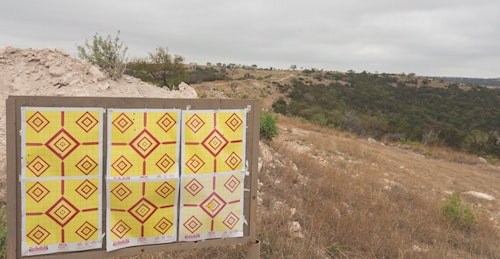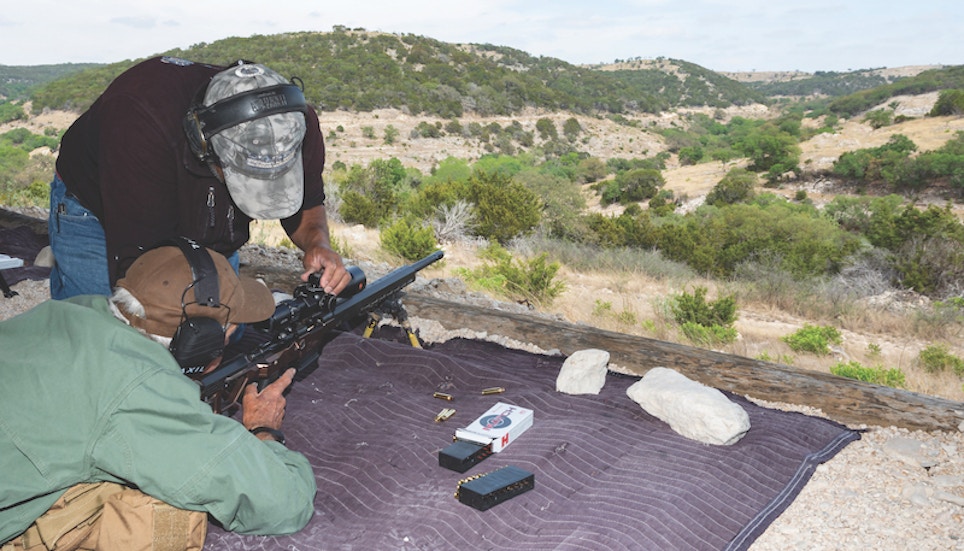Modern firearms are a product of CNC precision, arriving with squeaky-tight tolerances that would boggle the minds of the craftsmen whose old-world skill, patience and pride produced the tack-drivers of yesteryear. Modern metallurgy and technology have displaced that traditional blend of art and science poured into a quality gun, but those vanishing virtues remain mandatory for a shooter to deliver shots on target, at distance.
Today’s fast-paced business climate can obscure that fact from company executives, although a few firms are quietly bucking the trend. One of them is Christensen Arms, which launched its Quest program in 2021 to help owners wring the last bit of performance out of their rifles with confidence-building practice with the aid of experienced instructors.
The sessions include lengthy and challenging shooting in real-world environmental conditions that make the approach unusual, one that’s ideal for serious predator hunters who never quite know what they’ll encounter, or where. The distances the Christensen Arms rifles connected at during my recent trip were positively staggering, in stiff and changing breezes. Reminders about ethical hunting were early and often. Range is stretched strictly to build confidence, instill knowledge and gain a firm understanding of personal limitations.
The Guns
There were two Christensen Arms bolt-action rifles on hand. Day one, in my case, began behind the more traditionally styled Ridgeline Titanium chambered in 6.5 Creedmoor. The next day I was behind the company’s identically chambered Modern Precision Rifle (MPR). Leica scopes were on both guns and ammunition was Hornady 147-grain ELD Match loads.
Both rifles are available in a variety of configurations and feature button-rifled, hand-lapped and free-floating barrels. Muzzle brakes rode each and the Trigger Tech triggers were glassy smooth, creep free and a pleasure to work.
The MPR comes with a hard coat anodized 7075 billet aluminum chassis and removable box magazine. The Ridgeline has a hinged floorplate with a four-round cartridge capacity (three in magnum chamberings) and comes with the company’s renowned carbon-fiber composite stock, its upgrade the real catalyst for my Texas trip. The new stocks weren’t quite ready for show when I arrived, although the details are intriguing. Christensen Arms is bringing the same higher-in-strength, lower-in-weight, cutting-edge graphite composite construction common in Formula 1 racing to firearms. It’s space age stuff, tough enough to handle 6-G corners and 200-mph straights yet maintain structural integrity through abuse.
Production of the new stock is dramatically faster than the old one — those elite race teams come up with upgrades between events, after all. The looks are slightly different and there is zero manufacturing waste. It’s an efficient process, one capable of addressing high-stress or wear points without added bulk or heft. Odds are good we won’t see one in Ferrari racing red with a rear wing, but the technology being harnessed almost guarantees the company’s new models will cross the performance finish line well in front of the competition.
As for the guns tested during the event, there were no stoppages, failures to feed or malfunctions. A few failed to fully seat the MPR’s magazine — common when a dozen people get behind a relatively unfamiliar gun. But the lack of any other problems is a real rarity.

Christensen Arms Quest
Christensen Arms Quest is a three-day training program at FTW Ranch, which is located near Barksdale, Texas. The emphasis is on learning your rifle and optic, increasing skills and delivering an ethical shot at those distances in which you’re capable and confident. As the instructors often remind everyone, “You get only one first shot.”
What’s distinct about the course is the focus on field-expedient rests. Basics are covered beforehand, of course. After the requisite safety briefing, facility familiarization and seminars, you head to the range and sight-in. Then distances push beyond 100 yards, stretching out to 1,000 yards on steel targets.
At first everything is done from the prone position, collecting dope along the way that allows you to dial the optic for elevation with precision. Then you practice from the sitting, kneeling and standing positions, using shooting sticks, packs or anything nearby for stability. Instructors are eager to demonstrate and encourage using impromptu aids, many in surprising manners. It’s all done from the comfort of covered firing lines, multiple ones, located on 12,000 acres in Texas’ hill country. There are no arduous hikes required, though. A fleet of blue Jeeps hauls the entire crew and supplies into and out of the field, checking targets whenever necessary.
Instructor-to-student ratio is lower than nearly any other course I’ve attended. The patience they exhibited was refreshing compared to some other seminars, too — eager to help students improve their skills, but with a full understanding they don’t magically osmose. The practical application that comes afterward is the real education. Distant shots using nothing more than natural terrain to aid in precision is a challenge too rare in other courses. It forces shooters to think creatively, adapt to their physical limitations and harness everything available to their advantage. Packs on rocks, forks in trees, a spotter braced against a back and much more is a welcome friend when shooting 500 yards. Perhaps more importantly, it delivers a lesson too often ignored: Those one-hole groups from a bench swell significantly afield.
It’s in the Details
It’s something every hunter, particularly those who have a passion for pursuing predators, should experience. It’s humbling but expands skills and knowledge. There are three different Quest packages available, beginning with the Standard Package at $4,000 for three days. You don’t even need to bring a rifle. A Christensen Arms bolt-rifle will be waiting for you at the ranch. Simply fly into San Antonio, Texas, where a team member will greet you at baggage claim and drive you to the facility. You’ll be staying in a private cabin, by the way, and all meals are provided.
If you prefer to claim the gun you’ll learn so well, then consider the Firearm Package at $8,500. It includes all the above, one of the company’s MPR or Ridgeline series rifles for your own, plus Christensen Arms PRSR-HD scope rings, Pelican case with pre-cut foam insert, bipod, 5.11 Tactical backpack and more. The VIP Package, $11,000, includes all that gear, plus a Swarovski Optic X51 3.5-18x50mm P riflescope. You can even select a Quest session that culminates with a hunt on the ranch. You’re also driven back to the airport, in case you’re wondering.
About the FTW Ranch
You won’t be roughing it during your stay either. Cabins are spacious and have their own bathrooms. The classroom is large and includes all the key features, including AV facilities. The 8,000-square foot lodge has separate dining and entertainment areas, TV, fireplace, fully stocked bar, fridges with soft drinks and water and free Wi-Fi. Outside there’s a fire pit with plenty of seating when it’s time to relax under the stars.
On the ranch you’ll find whitetails and exotic big-game species. It’s worth a visit in itself — remote, scenic and ideal for shooters and their guests.
Back to Old School
The Christensen Arms Quest program is not about increasing sales. Get behind an MPR or Ridgeline — both of which connected at 1 mile during the event (and not in my hands) — and it doesn’t take much more convincing you need one than a few shots. Instead, the company has embarked on a route shunned by too many. With staff on hand, it’s a great opportunity to garner honest, in-the-field feedback and aid owners in wringing that last drop of precision from the rifles.
It’s a customer service of sorts, a hands-on blend of firing-line science, with knowledge gently dispensed and skill built. Owners improve their understanding of the rifle, optic, load and, perhaps more importantly, limitations once they leave the bench and head afield.






